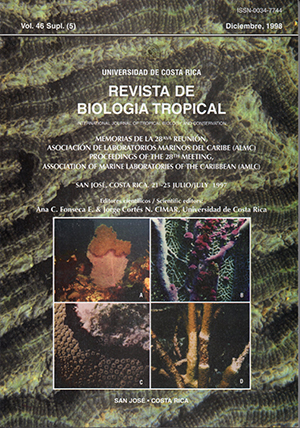Abstract
Coral reefs around Carrie Bow Cay, Belize, Central America were investigated in 1972 and reefs of the 10hn Pennekamp Coral Reef State Park off Key Largo, Florida in 1973. Both sites were resurveyed in 1997 and a new threat to coral health was found: a rather epizootic occurrence of other organisms overgrowing living coral. On the reef-flat of the Barrier Reef north of Carrie Bow Cay, there are fields of Acropora cervicornis and Porites porites, scattered over shallow sand-bottom. A large number of these corals show either "tufts" of blue-green algae, or filamentous "flags". Both may cover substantial portions of individual coralla; the living tissue disappeared at the of con tact area. Another type of overgrowth on living corals is represented by the red alga Metapeyssonnelia corallepida, as well as the brown alga Lobophora variegata. Both overgrow mainly Millepora complanata and Malcicornis, but a1so other corals with smooth surface, such as Porites porites and P. astreoides. This syndrome occurs about equally abundant around Carrie Bow Cay, Belize, and in reefs off Key Largo, Florida. A similar kind of tightly attached over growth is represented by the sponge Cliona caribbea. It was found regularly in the reefs around Carrie Bow Cay on a wide variety of coral species. An identical type of epizoism is represented by Chondrilla cf. nucula, which, so far, was observed only in Belize. All these new syndromes together amount to a considerable coral-degrading factor, which was not found in these reefs 25 years ago.##plugins.facebook.comentarios##

This work is licensed under a Creative Commons Attribution 4.0 International License.
Copyright (c) 1998 Revista de Biología Tropical


